Mastering Meat Tenderization: Techniques and Insights
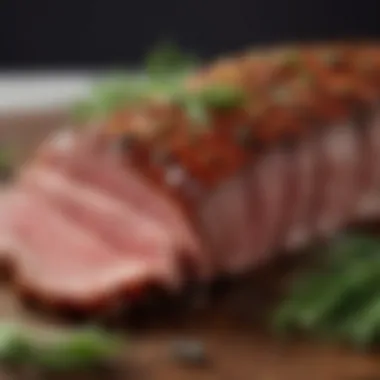
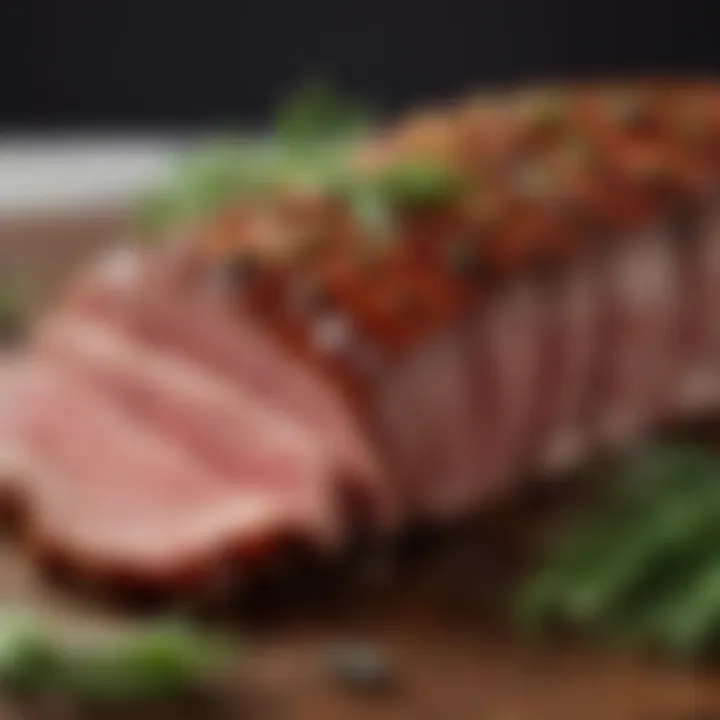
Intro
In the realm of cooking, the state of the meat can make or break a dish. Tender, succulent meat is often the holy grail for a home cook or seasoned chef, while tough cuts can lead to a culinary disaster, no matter how skillfully prepared. With an array of techniques and approaches available, the process of tenderizing meat is both an art and a science. Understanding the underlying principles can empower cooks to make informed choices, transforming any meal into a memorable feast.
This discussion explores the various methods to tenderize meat, from chemical treatments like marinades to mechanical techniques that involve physical alteration. Each method unveils a different aspect of meat preparation, offering unique benefits and limitations. By delving deeper into the science and methodology, cooks of all proficiencies can enhance their culinary skills and create dishes that highlight the full potential of meat.
Let's dissect some of these techniques in detail.
Understanding Meat Structure
Understanding the structure of meat is a crucial step towards mastering its tenderness. Meat is more than just protein; it is a complex interplay of fibers, fats, and connective tissues. Each component plays a role in achieving desired textures and flavors. By grasping how these elements work together, cooks can choose the right methods for tenderizing, ultimately delivering an enjoyable eating experience.
Types of Meat
Red meat
Red meat, typically derived from cattle, sheep, and pigs, is known for its bold flavor and rich color. A key characteristic of red meat is its higher myoglobin content, which not only contributes to the distinctive taste but also directly impacts tenderness. When preparing red meat, understanding its fibrous structure can help determine the most effective tenderizing techniques. For example, cuts like brisket may benefit from slow, moist cooking methods due to their higher collagen levels, making them popular choices in braises. However, cooking red meat quickly at high temperatures can result in tough bites, emphasizing the need for careful consideration of cooking techniques.
White meat
White meat, primarily from poultry such as chicken and turkey, has a different muscle composition compared to its red counterpart. It’s generally lower in fat and tends to cook faster, which makes it appealing for quick meals. The lack of myoglobin in white meat gives it its paler appearance. A unique feature of white meat is its susceptibility to drying out if overcooked. Therefore, marinating or brining can greatly enhance the tenderness and flavor, allowing cooks to elevate their dishes without excessive time investment.
Fish and seafood
Fish and seafood present another avenue for exploring meat tenderness. Their delicate muscle structures require a nuanced approach to cooking. Unlike red and white meats, seafood can easily become rubbery when overcooked, making discerning cooking times essential. The key characteristic of fish is its high moisture content, which can be preserved through methods like poaching or steaming. Furthermore, the natural fats found in oily fishes, like salmon, can help contribute to their tender texture as well as their rich flavor profile, making them a sought-after choice.
Muscle Fiber Composition
Types of muscle fibers
Muscle fibers in meat can be categorized into slow-twitch and fast-twitch fibers. Slow-twitch fibers, often found in muscles used for endurance, are generally more tender and suited to slow cooking methods. Conversely, fast-twitch fibers are prominent in muscles used for quick movements, making them juicier but tougher. Recognizing these differences is essential for choosing appropriate tenderizing strategies. For example, slow-cooking methods work well for tougher cuts that are predominantly fast-twitch, breaking down the connective tissue and rendering them more palatable.
Connective tissues
Connective tissues, primarily collagens, play a significant role in meat tenderness. These tissues surround muscles and affect the overall texture and juiciness of the product. When cooked slowly, collagen transforms into gelatin, which contributes moistness and richness to dishes. However, cooking cuts that contain high amounts of connective tissue requires patience, as the transformation does not happen overnight. Knowing which cuts have more connective tissues, such as chuck or brisket, can significantly alter the approach a cook takes in the kitchen.
Fat content and its implications
Lastly, the fat content of meat can influence both flavor and tenderness. Intramuscular fat, or marbling, enhances the taste and can result in a more tender bite. Cuts with higher fat content, like ribeye or pork belly, often require less intensive tenderizing techniques compared to leaner cuts due to their inherent moisture. On the flip side, excessively fatty meats can lead to unbalanced flavor profiles, which calls for judicious cooking methods to achieve equilibrium. Understanding the implications of fat can guide cooks in selecting the right cuts for their desired outcomes.
The Science of Tenderness
Understanding the science of tenderness is crucial for anyone looking to elevate their meat cooking skills. Tenderness in meat isn't merely about achieving a certain texture; it's a complex interplay of various biochemical reactions and cooking methods. By grasping the science behind tenderness, cooks gain insights into selecting the right techniques tailored for different cuts, which ultimately leads to a more enjoyable eating experience. Moreover, this knowledge can distinguish the ordinary from the exceptional in meat preparation.
Biochemical Reactions
Enzymatic activity
Enzymatic activity plays a pivotal role in tenderizing meat. Naturally occurring enzymes in meat, such as proteases, work to break down proteins and connective tissues, which leads to more tender cuts. A key characteristic of enzymatic activity is its ability to act slowly and consistently; this slow breakdown allows flavors to mingle, improving overall taste as well. The benefit of this method, notably, is its non-intrusive nature—no additional ingredients are strictly needed. However, an important consideration is the need for time; sufficient marinating is essential to achieve the desired tenderness, otherwise, the results might fall short.
Proteolysis
Proteolysis is a specific biochemical process where proteins are cleaved into smaller peptides or amino acids, thereby enhancing tenderness. What makes proteolysis particularly beneficial is its efficiency; with the right conditions (temperature, time, and pH), it effectively targets tough proteins in meat. A unique feature of this process is that it often occurs naturally during aging, which is why aged meats are usually more tender. The downside? If not controlled properly, too much proteolysis can lead to a mushy texture, which some might find unappealing. Understanding this balance is crucial.
Impact of pH levels
The impact of pH levels on meat tenderness is a subtle yet significant aspect. Lowering the pH—often achieved through acidic marinades—can enhance tenderness by facilitating proteolysis. This characteristic of embracing acidity can be advantageous, making marinades not only a flavor enhancer but also a tenderizer. An interesting point about this is that pH also influences the color and flavor, creating a multi-dimensional effect on the final dish. However, it’s vital to note that if an acid is left to sit too long on meat, it can have the opposite effect, rendering the surface tough.
Cooking Techniques and Meat Tenderness
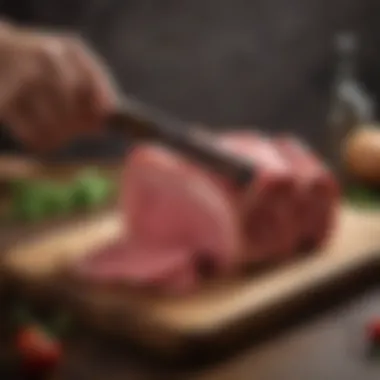
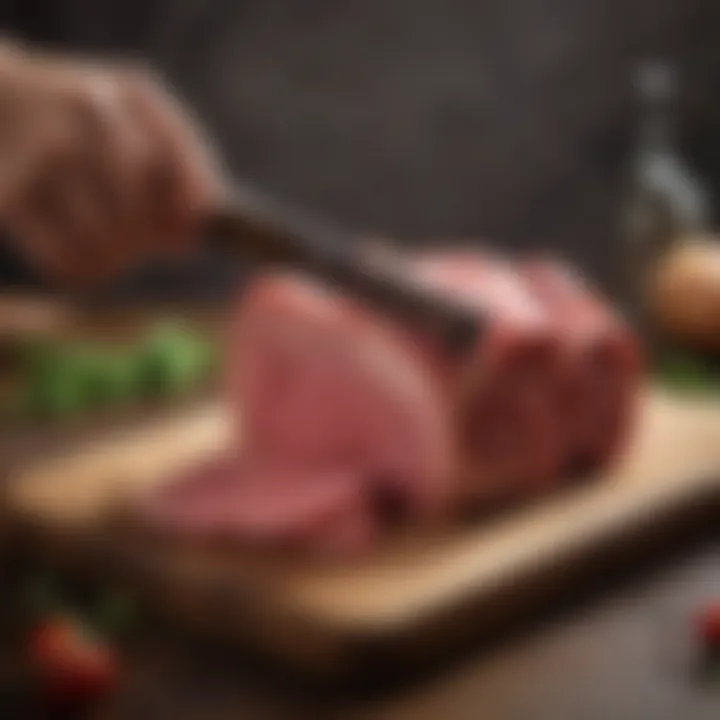
Slow cooking
Slow cooking is one of the cornerstones of achieving tender meat. This technique involves cooking at low temperatures over a prolonged period, allowing the collagen in tougher cuts to break down into gelatin. A defining trait of slow-cooked meat is the rich, succulent flavor that emerges after hours of gentle heat. The benefit here is twofold: flavor maximization and tenderness enhancement. On the flip side, it does require patience, and not every cut of meat responds equally to this method, making selection essential.
High heat methods
Conversely, high heat methods such as grilling or broiling can also yield tender results, particularly with well-marbled cuts. This technique works by quickly searing the outside of the meat, which seals in juices and creates a tender interior. A standout aspect of high heat is the flavor generated through caramelization and the Maillard reaction, giving meat a distinctive crust. However, precision is critical; overcooking can lead to dryness, compromising tenderness. Therefore, knowing the right times for various cuts is paramount.
Moist vs. dry heat
The debate between moist and dry heat methods revolves around the desired end result. Moist heat methods, like braising and stewing, are excellent for tougher cuts, allowing them to tenderize fully as they cook in liquid. A noteworthy feature of this approach is the infusion of flavors from the cooking liquid. Conversely, dry heat methods capitalize on quick cooking at high temps, which can best suit tender cuts. Each method holds distinct advantages; understanding their applications will empower cooks to make informed decisions based on the meat and cooking scenario.
Methods for Tenderizing Meat
Tenderizing meat is a crucial step for anyone seeking to elevate their culinary creations. Understanding the various techniques available provides both home cooks and experienced chefs with the tools needed to enhance flavor, texture, and overall enjoyment. Each method brings unique advantages and challenges, whether it’s physical manipulation of the meat or the use of marinades and chemicals. Grasping these methods ensures that you can consistently achieve the desired results when preparing meat dishes.
Physical Techniques
Mechanical tenderization
Mechanical tenderization involves physically breaking down the muscle fibers in meat. This is done using tools such as meat mallets or specialized machines that pierce the meat. The key characteristic of mechanical tenderization is its instant effect, allowing for a quicker cooking time while yielding softer textures. It’s a popular option for those who are short on time or looking to tenderize less expensive cuts. However, care must be taken when using this technique, as over-tenderizing can lead to a mushy texture, which may not appeal to all.
Brining
Brining is a technique that uses a salt-water solution to enhance moisture retention in meat. By soaking the meat in this mixture, the salt penetrates and helps to break down proteins, leading to juicier and more flavorful results after cooking. The unique feature of brining is its ability to infuse the meat with flavor without altering the cooking process. A downside to consider is that brining can be time-consuming, as it generally requires several hours for proper absorption.
Marinating
Marinating is another popular technique which involves soaking meat in a seasoned liquid. This process not only tenderizes but also imbues remarkable flavors into the meat. The beauty of marinating lies in its versatility: cooks can use a variety of liquids such as vinegars, citrus juices, and even yogurt to achieve different tastes and tenderness levels. One key consideration is that the efficacy of a marinade often relies on timing; leaving meat in the marinade for too long can lead to overly soft or mushy outcomes, contrasting the flavor enhancement sought in the first place.
Using Salt and Marinades
The role of salt in tenderizing
Salt plays a fundamental role in meat tenderization, primarily through the process known as osmotic pressure. When salt is applied to meat, it draws out moisture which, when replaced, allows for the breakdown of tougher proteins. The key characteristic of this method is its simplicity and effectiveness. However, caution is warranted, as excessive salt can lead to overly salty results, ruining the dish entirely.
Acidic components in marinades
Acidic ingredients, such as lemon juice or vinegar, are vital components of marinades that contribute to meat tenderization. These acids work by denaturing proteins, which helps to soften the meat. Their distinct feature is the ability to not only tenderize but also flavor the meat profoundly. Yet, there’s a balance to strike; too much acid over extended periods can dry out or toughen the outer layer of the meat, counteracting its intended effect.
Timing and temperature considerations
Proper timing and temperature can make or break the tenderizing process. For instance, at room temperature, marination can occur more rapidly, allowing for a quicker flavor infusion. However, marinating meat for too long can lead to unintended results, such as a mushy texture. Understanding the right time to marinate, heat distribution while cooking, and appropriate resting time afterward is key to achieving optimal tenderness and flavor.
Chemical Tenderizers
Enzyme-based tenderizers
Enzyme-based tenderizers, like papain from papayas or bromelain from pineapples, offer an interesting approach to meat tenderization. These natural enzymes break down protein chains in meat, leading to a more tender result. What makes this method appealing is its minimal effort. A simple sprinkle or marinade can yield significant effects. However, there’s a potential downside — if used excessively, the enzymes can over-tenderize meat, resulting in an undesirable texture.
Commercial meat tenderizers
Commercial meat tenderizers are ready-made products designed for ease and efficiency. These often contain enzymes or chemicals that aim to enhance tenderness quickly. Their primary advantage lies in convenience, making them a favored choice for busy cooks. Nevertheless, it’s important to read labels, as some products may contain additives that don’t sit well with discerning palates.
Natural tenderizing agents
Using natural tenderizing agents, like yogurt or buttermilk, has gained traction for those inclined towards holistic cooking. These products contain lactic acid and enzymes that gently break down protein fibers. Their advantage is twofold: they tenderize while infusing flavor. However, relying solely on natural methods may require a longer marinating time and an understanding of the specific meat being tenderized to achieve the best results.
In summary: Each method for tenderizing meat has its unique benefits and potential pitfalls. Experimental cooks are encouraged to utilize a mix of techniques to fully understand how each impacts the final dish, ensuring delightful outcomes in every preparation.
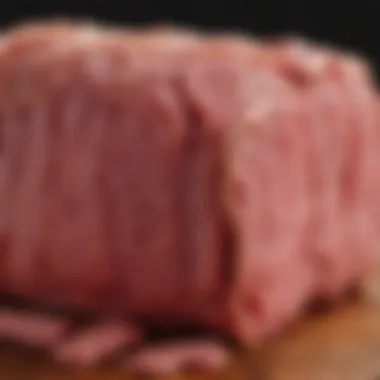
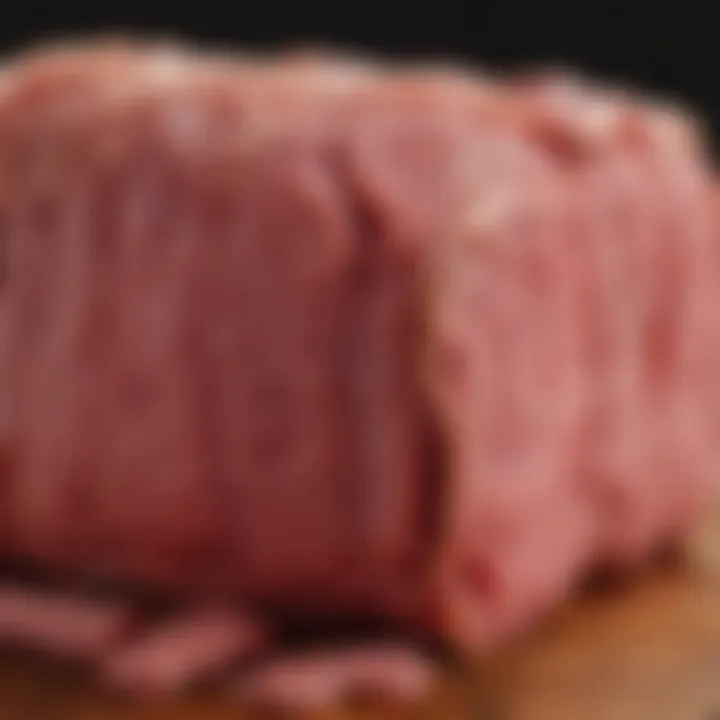
Traditional and Cultural Practices
Traditional and cultural practices around cooking meat reveal much about humanity’s relationship with food. Through generations, cultures have developed their own methods for tenderizing meat, often rooted in local herbs, spices, and techniques specific to their regions. Understanding the diverse practices from around the globe not only enhances cooking skills but also provides insight into the cultural heritage that shapes culinary arts.
Global Tenderizing Techniques
Latin American methods
Latin American tenderizing techniques often utilize unique marinades known as adobos, which are made from a blend of spices, vinegar, and citrus juices. One key characteristic of these methods is the effectiveness of acid for breaking down protein. For example, a mojo marinade, which typically includes sour orange, garlic, and oregano, not only infuses flavor but also works to tenderize tougher cuts of pork or beef.
The appealing aspect of Latin American methods is their ability to turn inexpensive cuts of meat into flavorful, succulent dishes. However, one should note that there can be a risk of over-marinating; if left too long, the acidity can turn the meat mushy, instead of tender. Knowing the right balance and timing is crucial for these techniques to shine.
Asian culinary techniques
Asian cuisine is rich with diverse techniques, including the use of soy sauce, sesame oil, and unique enzymes found in fruits like pineapple or kiwi. A highlight here is the velveting technique, which involves marinating meat in a mix of cornstarch and egg whites before cooking. This not only adds a protective coating but also helps retain moisture and tenderness during stir-frying or frying.
The distinctive feature of Asian methods lies in their focus on balancing flavors and textures, creating harmonious dishes. However, one must be cautious of using too much soy sauce or oil, as it can dominate the natural taste of the meat. A thoughtful approach to flavoring can yield rewarding results without overwhelming the dish.
European approaches
When considering European methods, one cannot overlook the Italian tradition of using saltimbocca, where thin cuts of meat are layered with prosciutto and sage. Another significant technique is the utilization of marinating meats in wine or beer, which has both tenderizing and flavor-enhancing properties. The characteristic here is often simplicity; combining high-quality ingredients speaks volumes.
These European methods encourage cooking with care, respecting the integrity of the meat. On the downside, not whisking the right blend of herbs can lead to blandness, undercutting the potential of what could be an exquisite dining experience. Precision in measurement and time is essential for achieving the best results.
Herbs and Spices for Tenderness
Traditional herbs used in marinades
Diving into the world of herbs, traditional choices like rosemary, thyme, and basil have long been heralded for their ability to not only flavor meats but also contribute to tenderness. These herbs often contain compounds that aid in breaking down proteins. The use of rosemary, in particular, is noted for its ability to add a robust flavor that complements heartier meats.
This characteristic makes herbs a fantastic addition to marinades. However, it’s crucial to not overdo it, as too much can lead to a herbal dominance that masks the natural flavors of meat. Balance is key.
Spices that enhance tenderness
Certain spices, such as paprika and cumin, play an essential role in enhancing tenderness as well. These spices often carry moisture-retaining capabilities, especially when combined with acidic marinating agents. Their vibrant profiles not only tenderize but elevate the overall dish significantly, making them popular in recipes from regions where spice is central to the culinary tradition.
Awareness should be maintained when incorporating spices; sometimes, they can overpower more delicate meats. An inviting flavor profile requires a careful hand in balancing ingredients.
Infusion and its effects
Infusion is a technique that involves marinating cuts of meat in flavored liquids, such as broth or oils infused with garlic, ginger, or chilies. This method penetrates further than surface-level marinating and allows for complex flavor development, resulting in meat that is not just tender but deeply flavorful.
The remarkable aspect of infusion is its versatility, allowing for countless combinations that can cater to various tastes and preferences. Yet, one must ensure not to soak meat for too long, as overly prolonged exposure can lead to a soggy texture, diminishing that sought-after meat tenderness.
Practical Tips for Home Cooks
Understanding how to effectively tenderize meat can turn an ordinary dish into a culinary masterpiece. Practical tips serve as your toolbox, giving home cooks the know-how to tackle tougher cuts and achieve succulent results. This section is all about demystifying the tenderizing process, focusing on selecting the right cuts, timing your techniques, and ensuring that you know what you’re doing in the kitchen.
Selecting the Right Cuts
Cuts that benefit from tenderizing
When it comes to meat, not all cuts are created equal. Cuts like flank steak, chuck roast, or round steak often require a bit of extra attention. These cuts have a more tightly packed muscle structure and tougher fibers, making them less forgiving during cooking. If you’re thinking of grilling or frying, deciding to tenderize these cuts can significantly enhance the eatability of your dish.
Instead of going for the usual ribeye, consider a cheaper cut that transforms beautifully when treated right. You get better flavor, more juiciness, and, as a bonus, more pocket change left in your wallet. The balance of flavor and tenderness is particularly noticeable when you choose the right marinade.
Understanding meat grades
Meat grading is another key component that home cooks should consider. In the United States, steaks are graded as Prime, Choice, or Select. Prime, for instance, has the highest marbling, which contributes to its tenderness. However, some might find that Choice cuts, when worked with the right techniques, can yield equally satisfying results. The grading system can sometimes come off as intimidating, but it’s all about finding what works for you. For the home cook, knowing these grades can guide you during your shopping trips, allowing you to pick cuts that not only match your budget but also your tenderizing methods.
Choosing based on cooking methods
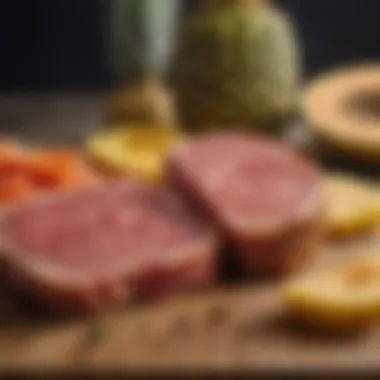
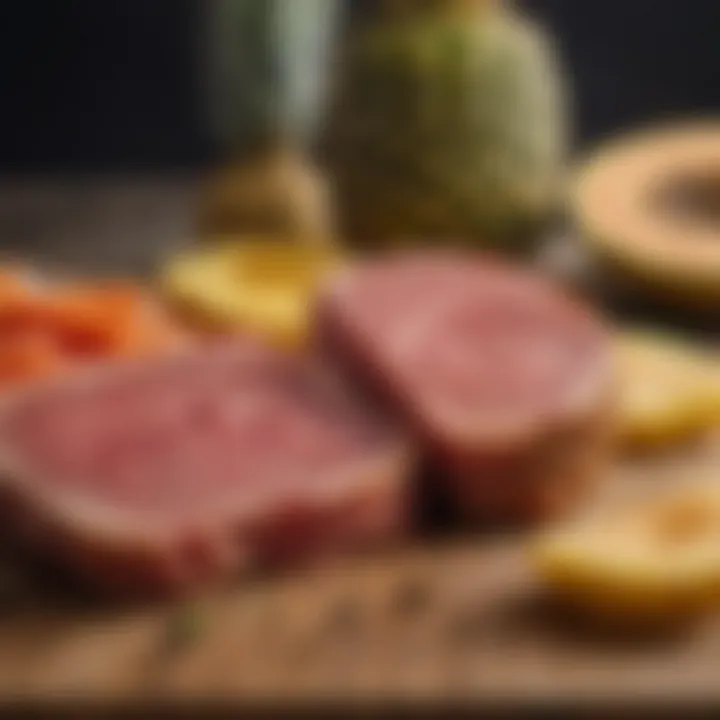
The method you plan to use for cooking should affect your choice of meat cut. For slow-cooking methods, like braising, tougher cuts are perfect because the slow heat breaks down collagen and renders them tender. Conversely, if you’re using high-heat methods like grilling or pan-searing, it’s better to pick cuts that already have a certain degree of tenderness, or those that can benefit from a quick marination before cooking. The key is to match your meat choice with the technique; this leads to great flavors and perfect tenderness in the final dish.
Timing Your Techniques
How long to marinate
Marination time is a crucial part of tenderizing meat. A well-timed marinade won't just soften the fibers; it enhances flavor as well. Most recipes will suggest anywhere from 30 minutes to 24 hours. However, the actual time depends on the cut and the marinade ingredients. Acidic components, like lemon juice or vinegar, can start breaking down the meat too quickly if left too long, leading to an unappealing mushy texture. Generally, for tougher cuts, aim for a longer marination—around 6 to 12 hours might be ideal. It's a balancing act of flavor infusion and maintaining that ideal texture that's so important.
Timing for cooking and resting
Cooking meat is just one part of the equation—resting it is equally important. Allowing the meat to rest after cooking gives juices a chance to redistribute, which enhances overall flavor and moistness. The timing will depend on the cut but generally 5 to 10 minutes for smaller cuts, and around 15 to 20 minutes for larger ones. Cutting into meat too soon essentially squeezes out the juices that you’ve fought hard to keep, resulting in a dryer end product.
Effects of time on tenderness
It’s fascinating how time contributes to tenderness in meat preparation. Not just through marination, but cooking time—too long or too short can have significant effects. For example, a steak cooked past its ideal temperature can become tough, making all your tenderizing efforts seem futile. Conversely, cooking low and slow transforms tough cuts into melt-in-your-mouth bites. Understanding the effect of time helps home cooks navigate their meat cooking endeavors. It’s more art than science; paying attention to how your meat behaves during marinating and cooking will get easier with practice.
Challenges and Considerations
Tenderizing meat is not just a simple task of following steps from a recipe; it involves navigating a myriad of challenges and considerations that can influence the outcome. Understanding the common pitfalls and safety concerns is crucial for achieving desirable results and ensuring a positive cooking experience. By being aware of these elements, cooks can maximize the tenderness of their meat while also prioritizing safe food handling practices. This knowledge not only enhances culinary skills but also contributes to overall cooking confidence.
Common Mistakes in Tenderizing
Over-marinating issues
One of the most pervasive mistakes cooks make is over-marinating the meat. While marinating adds flavor and tenderness, leaving meat in a marinade for too long can lead to undesirable textures. Essentially, the acid or salt in the marinade can break down proteins excessively, turning the meat mushy and unappetizing. A good rule of thumb is to monitor the marinating time based on the cut of meat. Thinner cuts generally need just an hour or two, while tougher cuts can benefit from overnight soaking.
By understanding the balance, cooks can leverage over-marinating to their advantage rather than ruining the dish. However, it's important to remember that skipping the marinade altogether can miss out on flavors.
Inappropriate methods for specific cuts
Not every tenderizing method works for all cuts of meat. For instance, using a mechanical tenderizer on delicate cuts, like filet mignon, can yield disastrous results. Instead, methods such as marinating or dry-aging suit these cuts much better. On the flip side, tougher cuts like chuck or shank often require a more forceful approach, such as mechanical tenderization or prolonged cooking to break down the fibers. Understanding how each cut reacts to different techniques is vital in preventing culinary mishaps and ensuring that each dish shines.
Misunderstanding chemical reactions
Chemical reactions play an integral role in the tenderizing process, yet many cooks remain in the dark about their effects. For example, the pH level of a marinade can significantly affect the meat's texture. A high pH (alkaline) environment can lead to a more tender product, while low pH (acidic) can enhance flavor but also firm up proteins if used incorrectly.
Many people might not realize that the marinating ingredients need to be chosen wisely, as they can interact in ways that impact tenderness. Skipping the science behind these reactions can lead to missed opportunities, ultimately affecting the quality of the finished dish.
Health and Safety Considerations
In the kitchen, health and safety must never take a backseat, especially when dealing with raw meat. Understanding proper handling and hygiene practices ensures not only delicious meals but also a safe cooking environment.
Food safety during marination
When it comes to food safety, marination can inadvertently introduce risks if not done right. Always marinate meat in the fridge rather than at room temperature to prevent bacterial growth. Cross-contamination can arise if the marinade is reused without proper cooking. If leftover marinade is being considered as a sauce for the cooked meat, it can harbor harmful bacteria. To keep diners safe, it’s prudent to mind these safety measures diligently.
Handling raw meat
Handling raw meat requires specificity and care. Using separate cutting boards and utensils can help ensure that contamination does not happen. Also, washing hands thoroughly before and after is a non-negotiable rule. Raw meat carries pathogens that can lead to foodborne illnesses, and ignoring this can have serious consequences. Respecting these protocols keeps dinner guests safe and elevates a cook’s professional image.
Cross-contamination risks
Cross-contamination is where one food item transfers harmful bacteria to another, and in the kitchen, this is a real concern. For instance, if a chef uses the same knife to chop vegetables right after cutting raw chicken, the risk of transferring harmful bacteria is significant. Each time raw meat is handled, strict caution must be exercised to prevent any contact with ready-to-eat food. By being conscious of these risks and how they can be managed, cooks can foster healthier cooking practices.
"A well-prepared meal doesn’t just require good ingredients; it demands respect for techniques and safety to truly shine."
Overall, addressing the common mistakes and health considerations related to tenderizing meat helps elevate cooking proficiencies. It's about understanding the delicate balance of techniques while maintaining a steadfast approach to food safety. By leveraging this knowledge, home cooks and professionals alike can master the art of meat tenderization.
Epilogue
In wrapping up our exploration of meat tenderization techniques, it's essential to recognize the multifaceted nature of the subject. Tenderizing meat is not just about achieving a softer bite; it's also about enhancing flavors and textures in ways that resonate with a variety of culinary preferences. By applying the various methods discussed—whether through mechanical means, brines, or marinades—cooks can elevate their dishes significantly.
Understanding factors like the specific cuts of meat, the role of time, and the biochemical processes at play makes a world of difference in cooking outcomes. These insights allow culinary enthusiasts to approach their meat preparation with confidence. Each attachment of flavor and texture you seek to achieve starts with these foundational principles.
Key Takeaways on Meat Tenderization
- Know Your Meat: Different cuts react differently to tenderization techniques. For instance, a tougher cut, like chuck, benefits more from prolonged marination or slow cooking methods compared to a tender cut like filet mignon.
- Time Matters: Over-marinating can turn meat mushy, while under-marinating won't get the job done. Finding that sweet spot is key for optimal flavor absorption and texture.
- Use Salt Wisely: Salt not only enhances flavor but also helps proteins denature, leading to better moisture retention. Keep in mind the timing when adding it to your preparations.
- Temperature Plays a Role: Both cooking and resting temperatures are critical. Allowing meat to rest post-cooking redistributes juices, making it juicier upon slicing.
- Explore Cultural Techniques: Different cuisines offer unique insights into tenderizing meat. From the Latin American method of using fruit-based marinades, such as pineapple, to Asian techniques using soy sauce, there’s much to learn from global practices.
- Safety First: Always prioritize food safety when dealing with raw meat. Understanding cross-contamination risks and proper handling techniques is vital to keeping you and your loved ones healthy.















